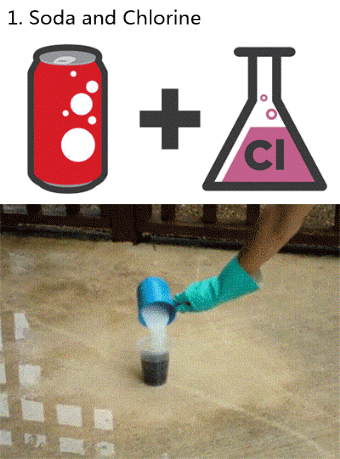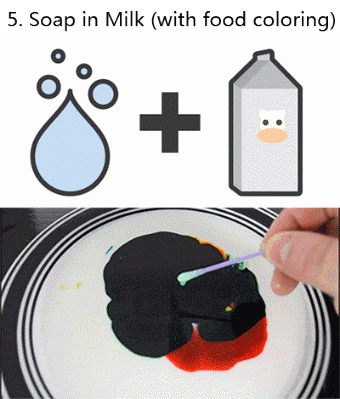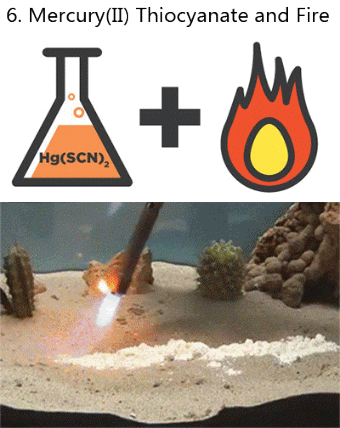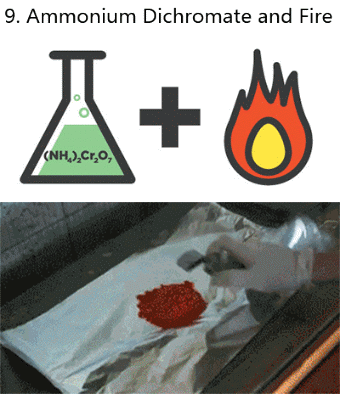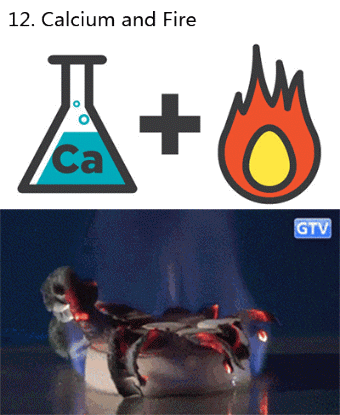Cyanobacterium: I Have Made Oxygen
cyanobacterium: i have made Oxygen
chemotrophs: you fucked up a perfectly good planet is what you did. look at it. it’s all rusty
More Posts from Science-is-magical and Others

An international team of researchers has finally decoded the science behind a plant responsible for no small degree of human misery: poison ivy.
For the first time, we now know why poison ivy leaves – the bane of campers, hikers, and overly curious kids alike – make us itch, and the answer lies in a key molecule called CD1a, which scientists have long known about but didn’t fully understand until now.
“For over 35 years we have known CD1a is abundant in the skin,” says researcher Jerome Le Nours from Monash University in Australia. “Its role in inflammatory skin disorders has been difficult to investigate and until now has been really unclear.”
One of the reasons for that lack of clarity has been that many experiments on skin disorders involve animal testing – specifically lab mice. And mice don’t produce CD1a, effectively creating a kind of ‘blind spot’ in the studies up to this point.
To get around this and examine whether CD1a might play a part in how human skin reacts when we brush up against poison ivy (Toxicodendron radicans) and similar rash-inducing plants, the researchers genetically engineered mice that did produce the molecule.
In doing so, the team found that CD1a – a protein that plays an important role in our immune systems – triggers a skin-based allergic reaction when we come into contact with urushiol, the allergen that functions as the active ingredient in plants like poison ivy, poison oak, and poison sumac.
When urushiol interacts with skin cells called Langerhans cells, the CD1a proteins (which are expressed by Langerhans cells) activate the immune system’s T cells. In turn, the T cells produce two proteins – interleukin 17 and interleukin 22 – which cause inflammation and itchiness.
Continue Reading.







Better late than never!
Here’s a comic about Cosmic Strings!
https://www.space.com/9315-cracks-universe-physicists-search-cosmic-strings.html
https://www.sciencedaily.com/releases/2008/01/080120182315.htm

A group of astronomers is using a new method to search for hard to spot alien planets: By measuring the difference between the amount of light coming from the planets’ daysides and nightsides, astronomers have spotted 60 new worlds thus far.
Continue Reading.
-
 archaeopter-ace liked this · 3 years ago
archaeopter-ace liked this · 3 years ago -
 redwoodsin reblogged this · 4 years ago
redwoodsin reblogged this · 4 years ago -
 redwoodsin liked this · 4 years ago
redwoodsin liked this · 4 years ago -
 cambri-evolution reblogged this · 4 years ago
cambri-evolution reblogged this · 4 years ago -
 spyro-nolactone liked this · 4 years ago
spyro-nolactone liked this · 4 years ago -
 danger-floof liked this · 5 years ago
danger-floof liked this · 5 years ago -
 screechingplaidhoagiezine liked this · 5 years ago
screechingplaidhoagiezine liked this · 5 years ago -
 desertedreign reblogged this · 5 years ago
desertedreign reblogged this · 5 years ago -
 cruxoftheissue reblogged this · 5 years ago
cruxoftheissue reblogged this · 5 years ago -
 cruxoftheissue liked this · 5 years ago
cruxoftheissue liked this · 5 years ago -
 seven-of-seven liked this · 5 years ago
seven-of-seven liked this · 5 years ago -
 neon-shaddows reblogged this · 5 years ago
neon-shaddows reblogged this · 5 years ago -
 neon-shaddows liked this · 5 years ago
neon-shaddows liked this · 5 years ago -
 quailgirlpeep liked this · 5 years ago
quailgirlpeep liked this · 5 years ago -
 hyperliked reblogged this · 5 years ago
hyperliked reblogged this · 5 years ago -
 moves-and-counter-moves reblogged this · 5 years ago
moves-and-counter-moves reblogged this · 5 years ago -
 one-in-a-maxi-million liked this · 5 years ago
one-in-a-maxi-million liked this · 5 years ago -
 misterjoshbear liked this · 5 years ago
misterjoshbear liked this · 5 years ago -
 aggressiveoptimism liked this · 5 years ago
aggressiveoptimism liked this · 5 years ago -
 the-dao-of-the-zerg liked this · 5 years ago
the-dao-of-the-zerg liked this · 5 years ago -
 shieldfoss liked this · 5 years ago
shieldfoss liked this · 5 years ago -
 sophia-epistemia reblogged this · 5 years ago
sophia-epistemia reblogged this · 5 years ago -
 inner-muse liked this · 5 years ago
inner-muse liked this · 5 years ago -
 carpinchito reblogged this · 5 years ago
carpinchito reblogged this · 5 years ago -
 lukefox24 liked this · 5 years ago
lukefox24 liked this · 5 years ago -
 titaniumelemental liked this · 5 years ago
titaniumelemental liked this · 5 years ago -
 cromulentenough reblogged this · 5 years ago
cromulentenough reblogged this · 5 years ago -
 cromulentenough liked this · 5 years ago
cromulentenough liked this · 5 years ago -
 zerofarad reblogged this · 5 years ago
zerofarad reblogged this · 5 years ago -
 alexanderrm reblogged this · 5 years ago
alexanderrm reblogged this · 5 years ago -
 sparks-me-fancy reblogged this · 5 years ago
sparks-me-fancy reblogged this · 5 years ago -
 sparks-me-fancy liked this · 5 years ago
sparks-me-fancy liked this · 5 years ago -
 sabotage-on-mercury liked this · 6 years ago
sabotage-on-mercury liked this · 6 years ago -
 theblackcat reblogged this · 6 years ago
theblackcat reblogged this · 6 years ago -
 sophus-b liked this · 6 years ago
sophus-b liked this · 6 years ago -
 alexanderrm reblogged this · 6 years ago
alexanderrm reblogged this · 6 years ago -
 villainmode liked this · 6 years ago
villainmode liked this · 6 years ago -
 caederemus reblogged this · 6 years ago
caederemus reblogged this · 6 years ago -
 alexanderrm reblogged this · 6 years ago
alexanderrm reblogged this · 6 years ago -
 alexanderrm liked this · 6 years ago
alexanderrm liked this · 6 years ago -
 abstrusetheorist reblogged this · 6 years ago
abstrusetheorist reblogged this · 6 years ago -
 theequeerstrian liked this · 6 years ago
theequeerstrian liked this · 6 years ago -
 ladyalisette reblogged this · 6 years ago
ladyalisette reblogged this · 6 years ago -
 grecianhedgehog reblogged this · 6 years ago
grecianhedgehog reblogged this · 6 years ago -
 beritto559 reblogged this · 6 years ago
beritto559 reblogged this · 6 years ago -
 beritto559 liked this · 6 years ago
beritto559 liked this · 6 years ago -
 mediocritie liked this · 6 years ago
mediocritie liked this · 6 years ago -
 worth1212 reblogged this · 6 years ago
worth1212 reblogged this · 6 years ago
